Our Gran Hotel getting into character
One word. Netflix. Binge watching--what a wonderful way to waste the time and ignore all family and responsibilities. Agree? Your students would. Why not take one of your students’ favorite pastimes and make it your secret weapon to foster language skills? Trust me. It will be a good decision.
This is my third semester using the series Gran Hotel from Spain in my Spanish 4 class and my first semester incorporating Erase una vez (Once Upon A Time) in Spanish 2. Using TV series have been a wonderful addition to the learning environment. Not only are they entertaining, but they are the perfect authentic resource that provides an authentic listening and/or reading experience. It foster new vocabulary, embeds the grammar structures all in a motivating context that the students enjoy. When done correctly, this can be a unique learning experience in which the teacher can scaffold countless learning opportunities.
I began considering a TV series after hearing about the series El internado from Spain. While highly captivating, I had some issues with the inappropriate language and some of the content, so I kept searching. I discovered Gran hotel which is set in 1905 in a hotel, of course. With murders, scheming, plot twists, love, and only 1-2 moments I should probably fast forward: the winner! To help ensure student understanding, I created a Hyperdoc that began with a study of 1905 Spain with its customs and culture, led to a study of the hierarchy of the culture and life in the hotel and culminated with a quick character study of the main players of the series. Since I am not a big fan of worksheets, this doc engages the students with creative activities.
For each episode, students read a quick summary in Spanish and draw pictures of useful vocabulary. There is always an activity that occurs during the watching of the episode: sometimes it is Episode Bingo, Who said it?, commenting through a Todaysmeet.com or an event checklist to name a few. After the episode, there is a recap which includes google forms with comprehension questions, writing text message, creating poems, working on a quizlet, or a Five Finger retell. After every 3 episodes we do a Wrap Up that involves a What would you do?, a Who would you be?, and making predictions for the next episode. Of course, as we watch, there is numerous video pausing and using leading questions to help clarify. If there is confusion, there is even rewinding and going subtitle by subtitle.
Now speaking of subtitles-- this not a struggle for me to decide. Let's be honest; as I binge watched it all summer, I found myself putting on the subtitles when it went too fast for my skills--and they do speak quickly! Of course I am going to give my students that tool to help them comprehend. Some will argue that subtitles turn the viewing into a reading skill instead of a listening skill. I agree, but, it does both. My goal is for my students to understand a plot line in the target language. I want them to be successful. As teachers, we are fostering language acquisition. You know learning is happening when students realize that the words that the characters are saying are not what is written in the subtitles. That is proof of learning.
After the series comes the fun part: Students choosing how to show their learning. With multiple
choices, everyone finds something they love. These range from writing the next chapter, creating a magazine or a website to creating a trailer or graphic novel.
We wrap up our Gran Hotel experience by becoming one of the characters, dressing in 1905 clothing and socializing in a High Tea, 1905 style. All interactions are in Spanish and all foods are authentic to the time period.
Now how do I know my students acquire language? Through conversation circles, dice chats, and simple plot checks. The best is when I put words on the board that appear throughout the series and the students have to shoot the meaning with a dart gun. They surprise themselves that they have learned! To end, here are some direct quotes from my students. I asked them to give feedback of the good and the bad.
First the bad:
“Sometimes hard to understand. I didn’t understand every little detail, which drove me nuts.”
“It all happens so fast-the plot and the talking.”
The Good:
“Lots of language picked up.”
“Entertaining.”
“I improved my listening skills.”
“The Hyperdoc really helped us understand.”
“Stopping the video and talking about the lines helped.”
“Discussion of the episodes.”
Will I continue to do it? Of course! Will I keep revising and making it better? Definitely--that is effective teaching! Did I know what I was doing before I started it? Not really. There isn’t much direction in this area. I went for it and had my students mold it as we went. Click here for my teaching guide and the link to the Hyperdoc. You don’t have to be expert! Just jump in and see where it takes you!
This is my third semester using the series Gran Hotel from Spain in my Spanish 4 class and my first semester incorporating Erase una vez (Once Upon A Time) in Spanish 2. Using TV series have been a wonderful addition to the learning environment. Not only are they entertaining, but they are the perfect authentic resource that provides an authentic listening and/or reading experience. It foster new vocabulary, embeds the grammar structures all in a motivating context that the students enjoy. When done correctly, this can be a unique learning experience in which the teacher can scaffold countless learning opportunities.
I began considering a TV series after hearing about the series El internado from Spain. While highly captivating, I had some issues with the inappropriate language and some of the content, so I kept searching. I discovered Gran hotel which is set in 1905 in a hotel, of course. With murders, scheming, plot twists, love, and only 1-2 moments I should probably fast forward: the winner! To help ensure student understanding, I created a Hyperdoc that began with a study of 1905 Spain with its customs and culture, led to a study of the hierarchy of the culture and life in the hotel and culminated with a quick character study of the main players of the series. Since I am not a big fan of worksheets, this doc engages the students with creative activities.
For each episode, students read a quick summary in Spanish and draw pictures of useful vocabulary. There is always an activity that occurs during the watching of the episode: sometimes it is Episode Bingo, Who said it?, commenting through a Todaysmeet.com or an event checklist to name a few. After the episode, there is a recap which includes google forms with comprehension questions, writing text message, creating poems, working on a quizlet, or a Five Finger retell. After every 3 episodes we do a Wrap Up that involves a What would you do?, a Who would you be?, and making predictions for the next episode. Of course, as we watch, there is numerous video pausing and using leading questions to help clarify. If there is confusion, there is even rewinding and going subtitle by subtitle.
Now speaking of subtitles-- this not a struggle for me to decide. Let's be honest; as I binge watched it all summer, I found myself putting on the subtitles when it went too fast for my skills--and they do speak quickly! Of course I am going to give my students that tool to help them comprehend. Some will argue that subtitles turn the viewing into a reading skill instead of a listening skill. I agree, but, it does both. My goal is for my students to understand a plot line in the target language. I want them to be successful. As teachers, we are fostering language acquisition. You know learning is happening when students realize that the words that the characters are saying are not what is written in the subtitles. That is proof of learning.
After the series comes the fun part: Students choosing how to show their learning. With multiple
choices, everyone finds something they love. These range from writing the next chapter, creating a magazine or a website to creating a trailer or graphic novel.
We wrap up our Gran Hotel experience by becoming one of the characters, dressing in 1905 clothing and socializing in a High Tea, 1905 style. All interactions are in Spanish and all foods are authentic to the time period.
Now how do I know my students acquire language? Through conversation circles, dice chats, and simple plot checks. The best is when I put words on the board that appear throughout the series and the students have to shoot the meaning with a dart gun. They surprise themselves that they have learned! To end, here are some direct quotes from my students. I asked them to give feedback of the good and the bad.
First the bad:
“Sometimes hard to understand. I didn’t understand every little detail, which drove me nuts.”
“It all happens so fast-the plot and the talking.”
The Good:
“Lots of language picked up.”
“Entertaining.”
“I improved my listening skills.”
“The Hyperdoc really helped us understand.”
“Stopping the video and talking about the lines helped.”
“Discussion of the episodes.”
Will I continue to do it? Of course! Will I keep revising and making it better? Definitely--that is effective teaching! Did I know what I was doing before I started it? Not really. There isn’t much direction in this area. I went for it and had my students mold it as we went. Click here for my teaching guide and the link to the Hyperdoc. You don’t have to be expert! Just jump in and see where it takes you!
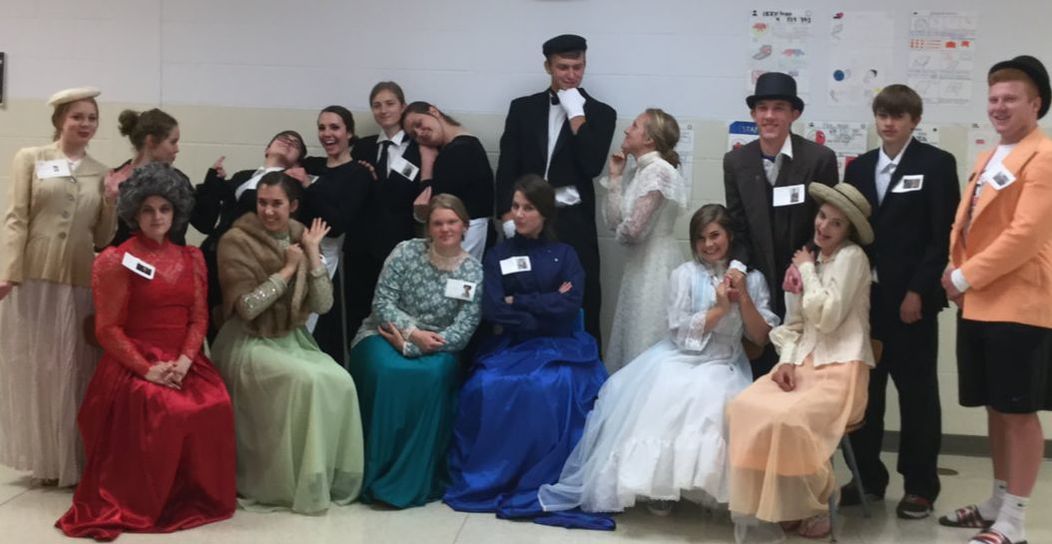
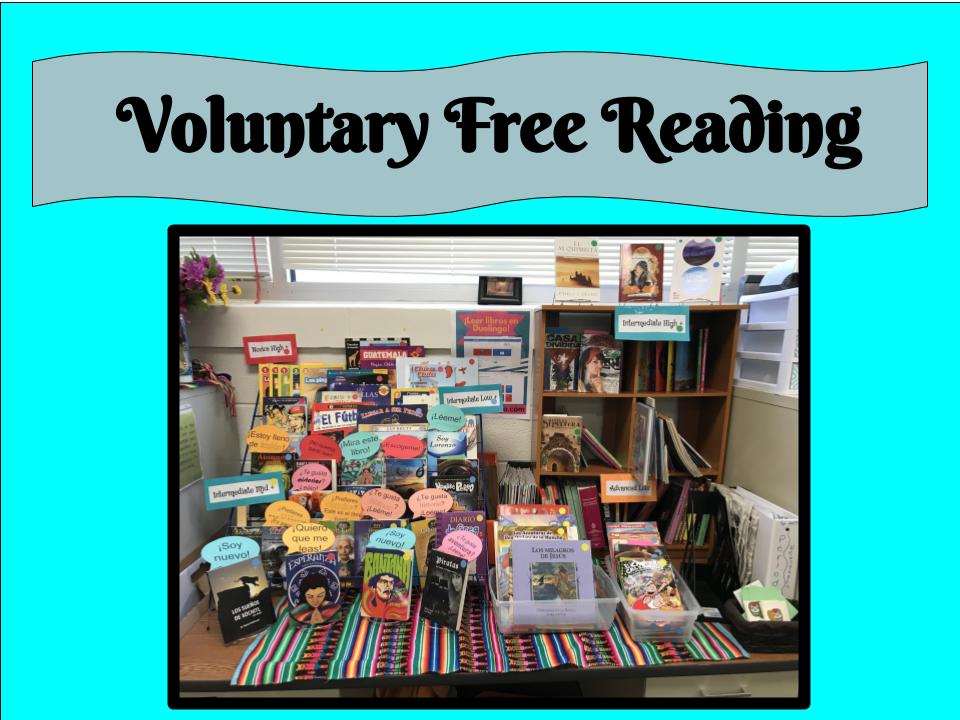
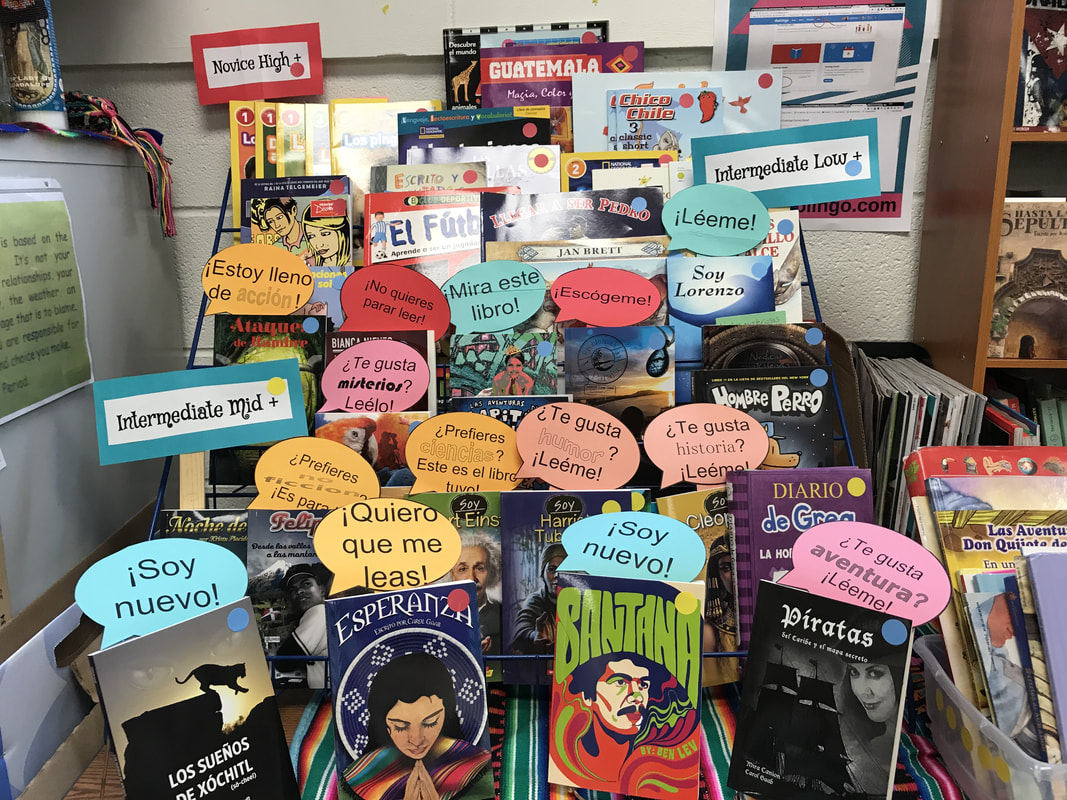
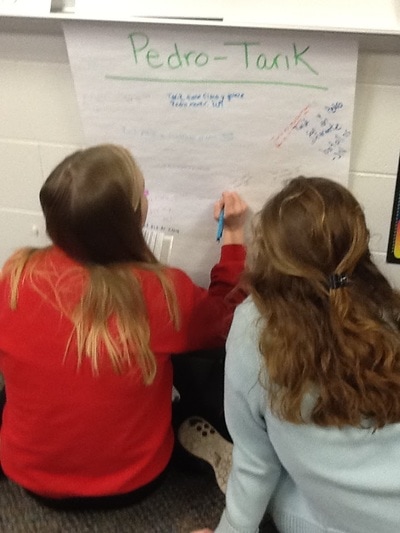
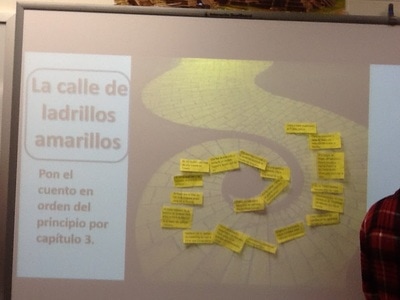
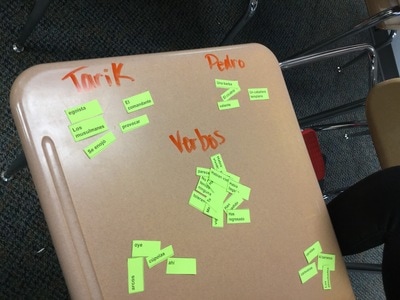
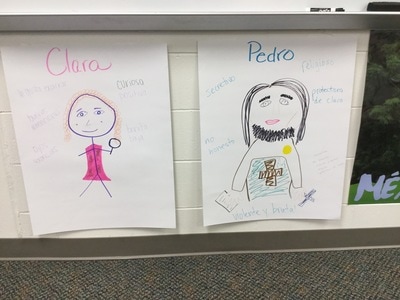
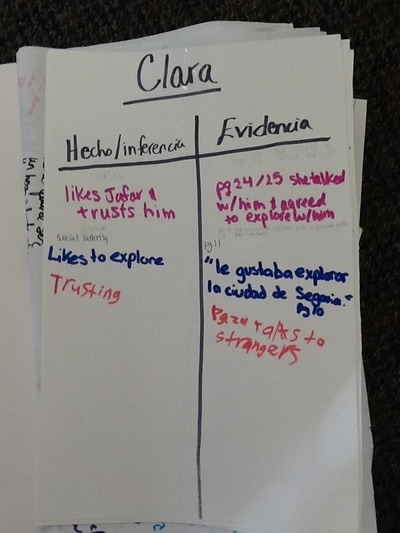



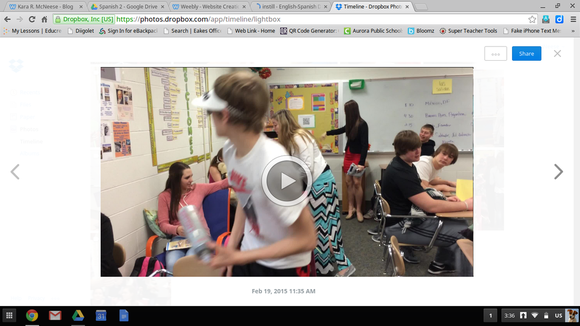
 RSS Feed
RSS Feed
